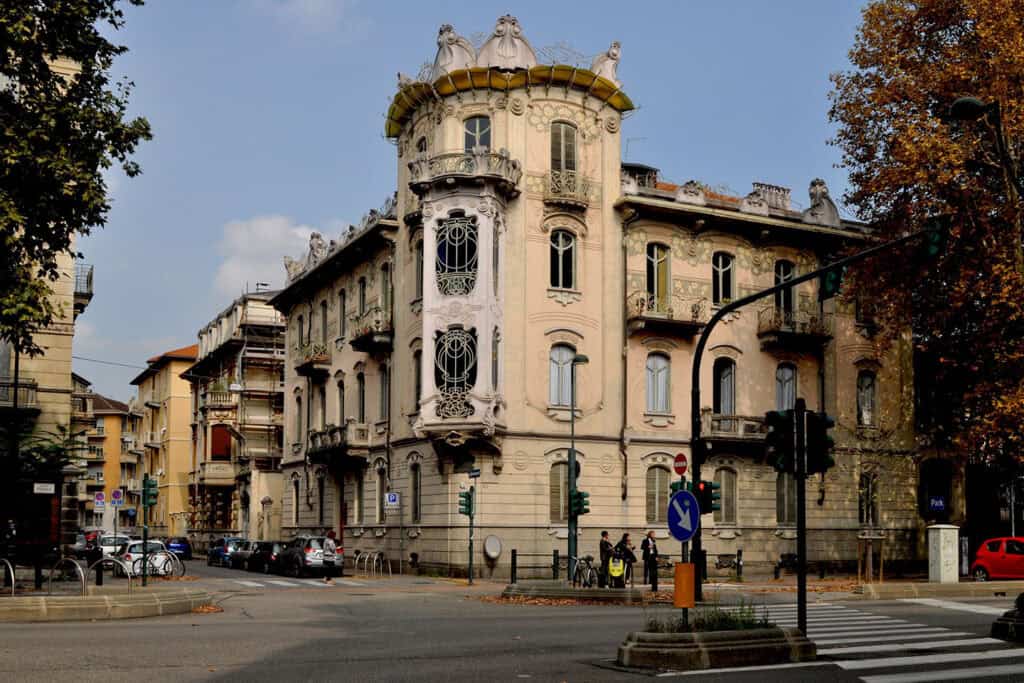
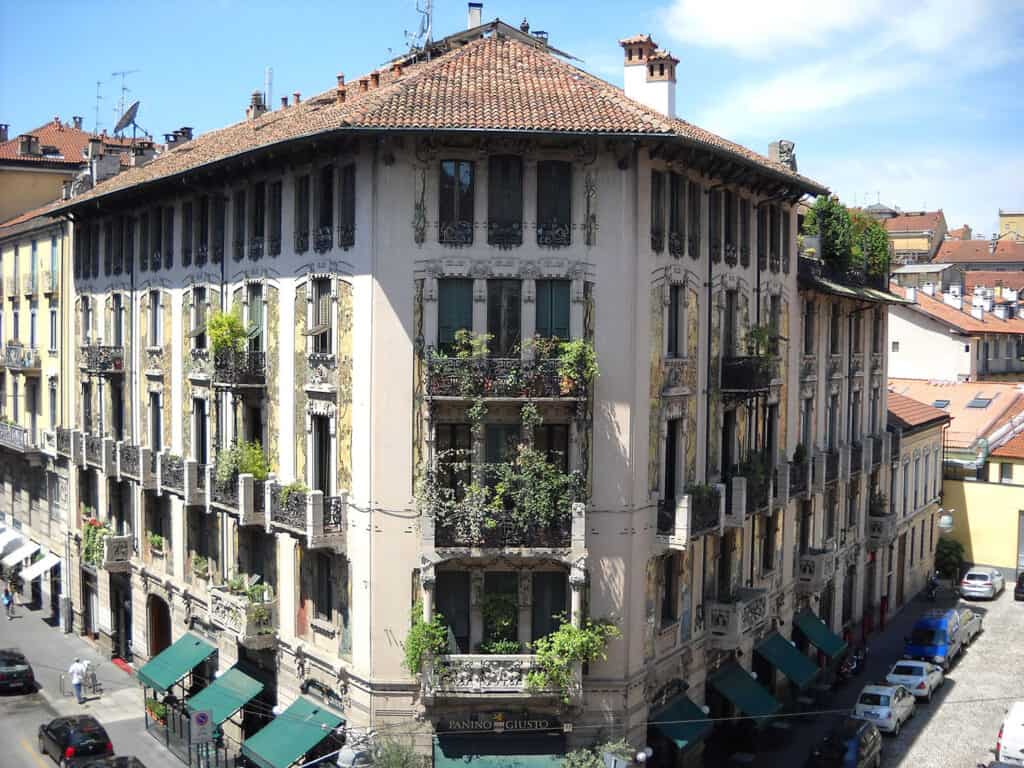
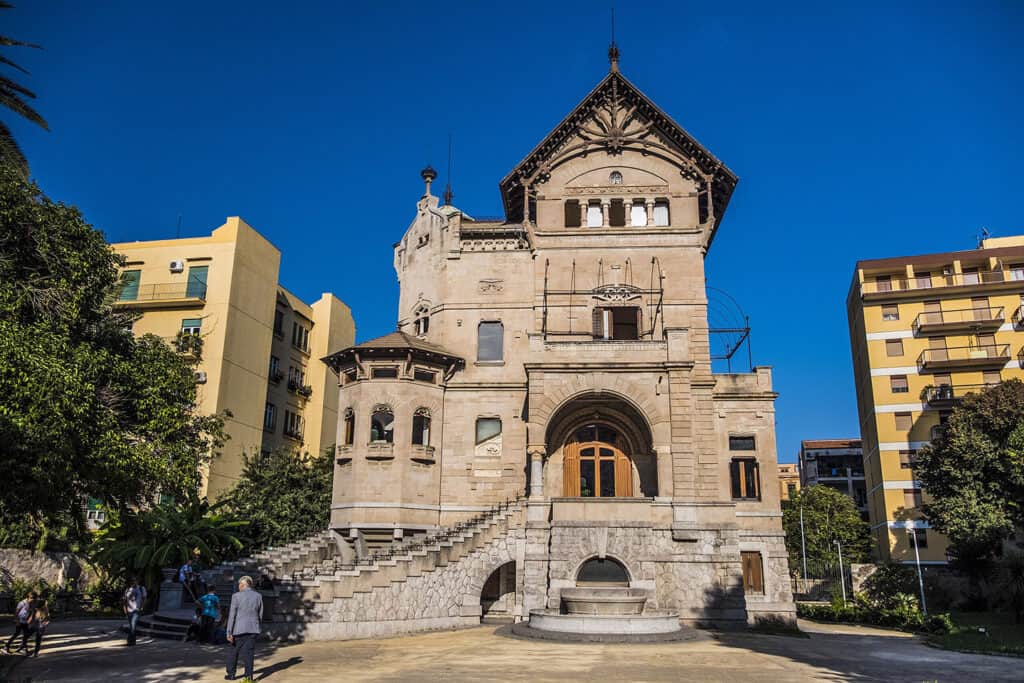
What if you could enter a world where architecture blends art with nature? Liberty Style Architecture, Italy’s version of Art Nouveau, does just that. It offers beautiful designs that impress the senses.
As an architecture fan, you should explore spaces that are practical and celebrate art. At Landmarks Architects, we are excited to guide you on this journey.
In this article, we will cover:
- The key features of Liberty Style Architecture
- 8 stunning examples found in Italy
- Their importance in culture and architectural history
Are you ready to discover the beauty of Liberty Style? Keep reading to learn how these amazing buildings can help you appreciate the harmony of design and art.
What is Liberty Style Architecture?
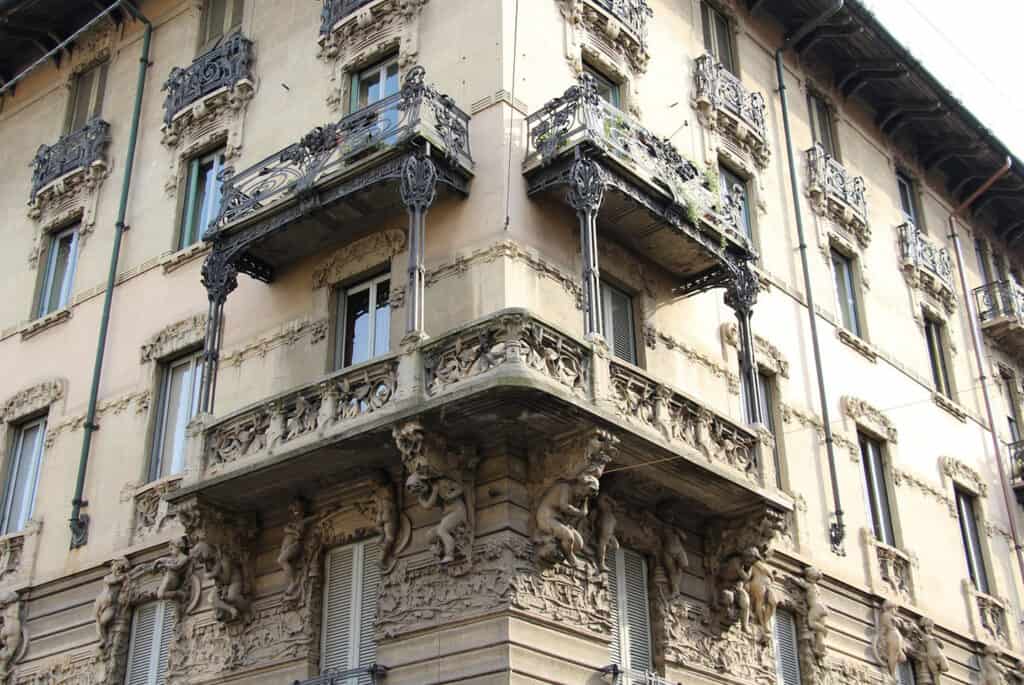
Liberty Style Architecture was the Italian variant of Art Nouveau, also known as stile floreale (“floral style”), arte nuova (“new art”), or stile moderno (“modern style” not to be confused with the Spanish variant of Art Nouveau which is Art Nouveau in Madrid).
Starting in the late 19th century and reaching its peak in the early 20th century, this style moved away from traditional architecture. It focuses on organic and decorative elements, influencing modern style and shaping various types of architectural styles.
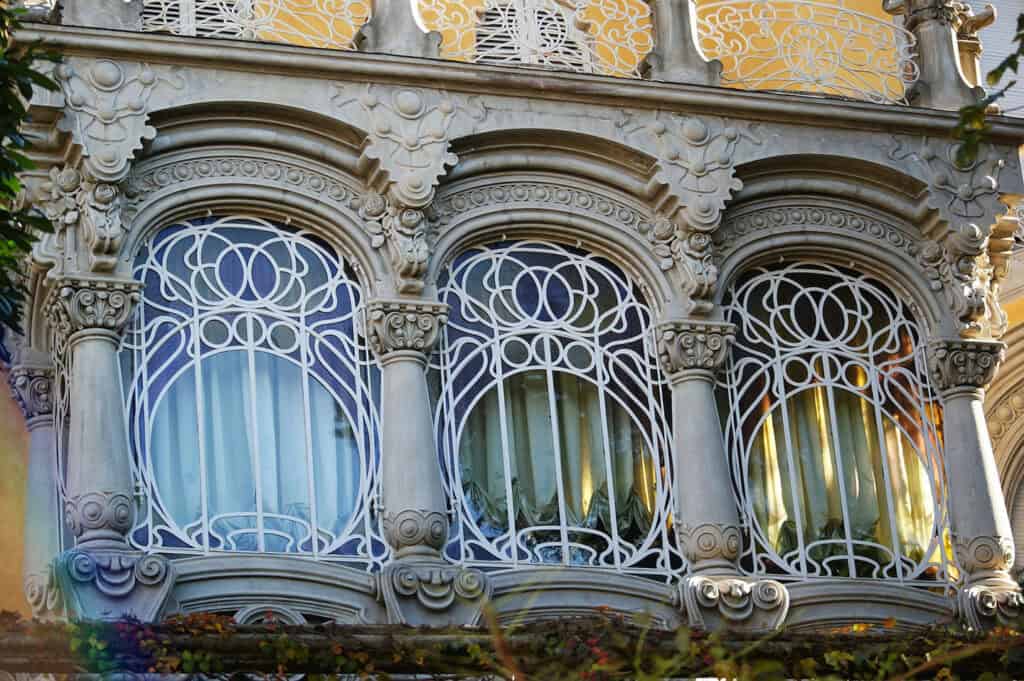
Key characteristics of Liberty Style Architecture include:
- Floral Motifs: Designs often include flowers and plants with detailed patterns.
- Curved Lines: There is an emphasis on soft, flowing lines instead of straight forms.
- Innovative Materials: It uses glass, iron, and new technologies in construction.
- Decorative Arts: It features artistic forms like ceramics, textiles, and metalwork.
- Functionality: Buildings are practical but also have artistic beauty.
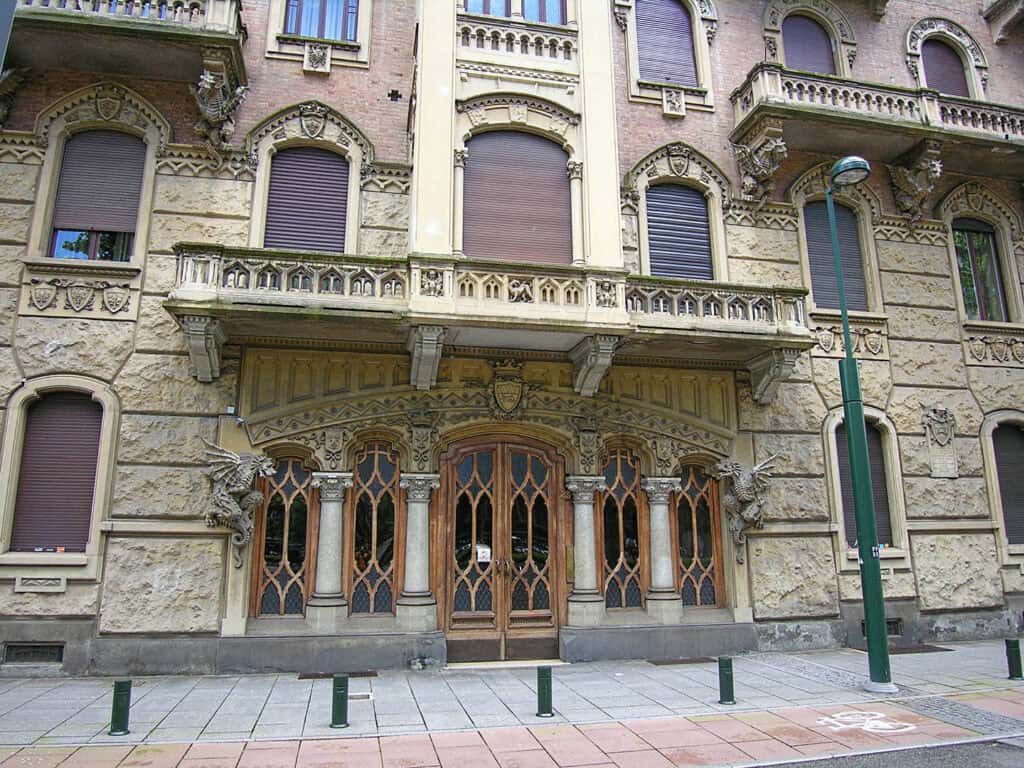
The Liberty style is part of the larger Art Nouveau movement. This includes publishing allowed Art Nouveau and many Art Nouveau architects. Art Nouveau spread to different regions and influenced styles like Art Deco and modern style.
It also connects to famous automobile designers and shows the Sicily Liberty style in its designs.
The Liberty style is an important movement that combines art with everyday life. Designers and architects embraced this style. They found inspiration in nature and modern technologies.
See Also What Are the Characteristics of Barcelona Architecture? 3 Distinct Styles
1. Palazzo Castiglioni
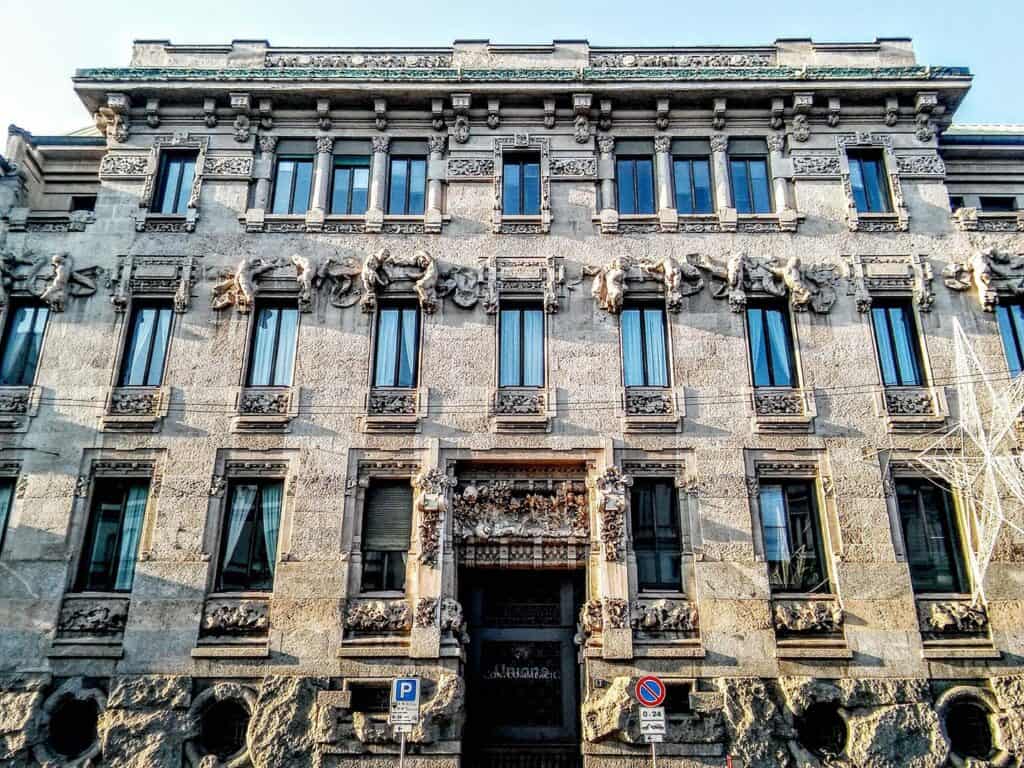
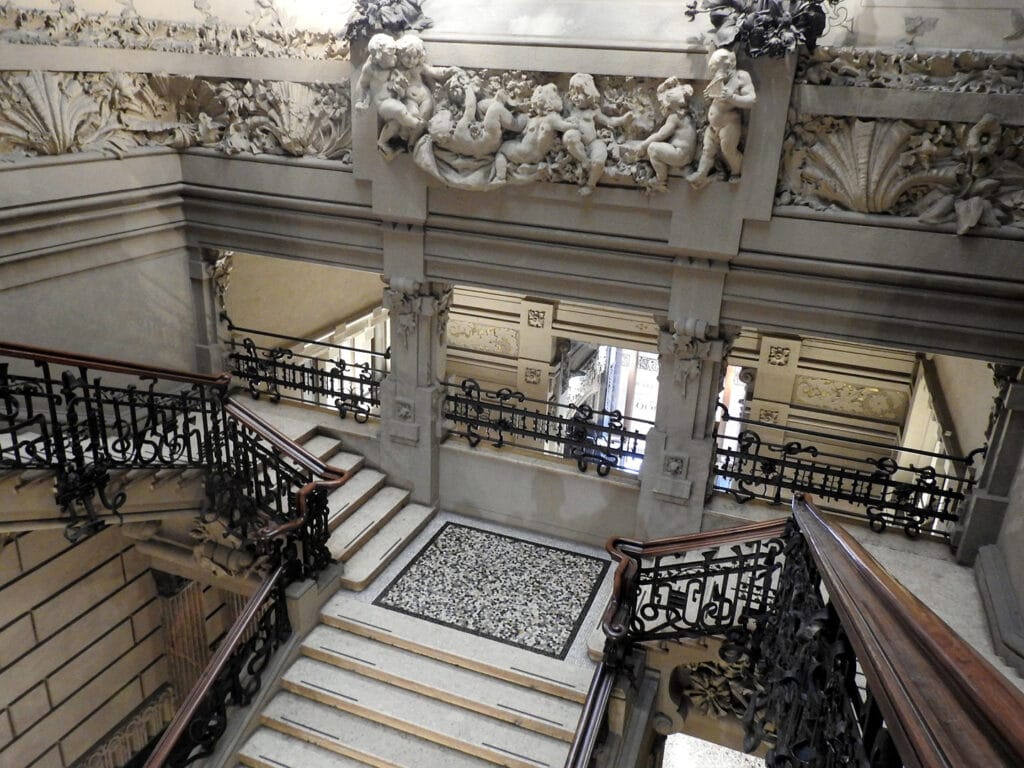
Palazzo Castiglioni in Milan is a famous Liberty-style building. Designed by Giuseppe Sommaruga, it was completed in 1903. The building has curved lines and floral decorations, which are typical of Art Nouveau.
The façade shows natural forms and artistic details, highlighting beauty in design. Stucco and ironwork add to its style, showing the Liberty style’s focus on blending architecture with nature.
This design mixes modern style with traditional craftsmanship. Palazzo Castiglioni is a key part of Milan’s architectural history. It represents the peak of Liberty-style buildings in Italy and keeps the influence of Art Nouveau alive in the city.
2. Villa Igiea
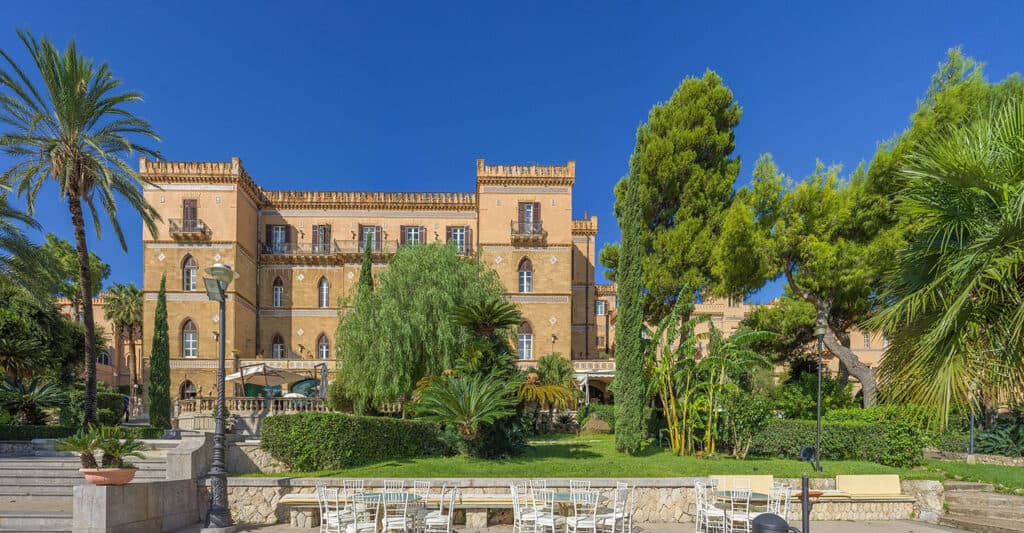
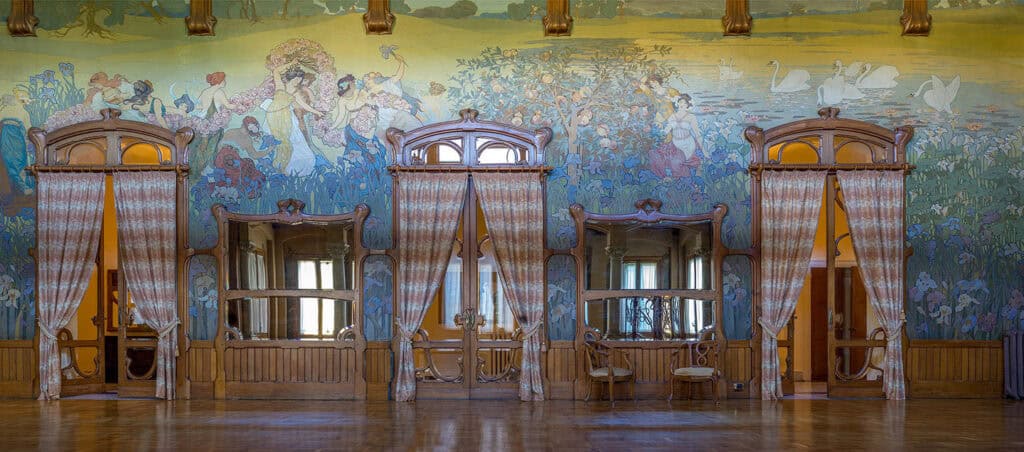
Villa Igiea in Palermo is a well-known example of Liberty-style architecture. It was designed by architect Ernesto Basile in the late 19th century. The villa features flowing curves and natural forms, common in the Art Nouveau movement.
The building has intricate ironwork, floral motifs, and elegant balconies that connect it to nature. Basile’s design includes modern elements and innovative ideas, making it important for the Sicily Liberty style.
The facade has striking details that match the landscape. Inside, artistic forms and unique furnishings showcase the Art Nouveau style.
Villa Igiea is a key part of Italy’s architectural heritage. Its beauty and history attract visitors who appreciate Liberty-style buildings and artistic expression.
See Also Famous Architecture in Barcelona: Top 18 Iconic Buildings
3. Villino Florio
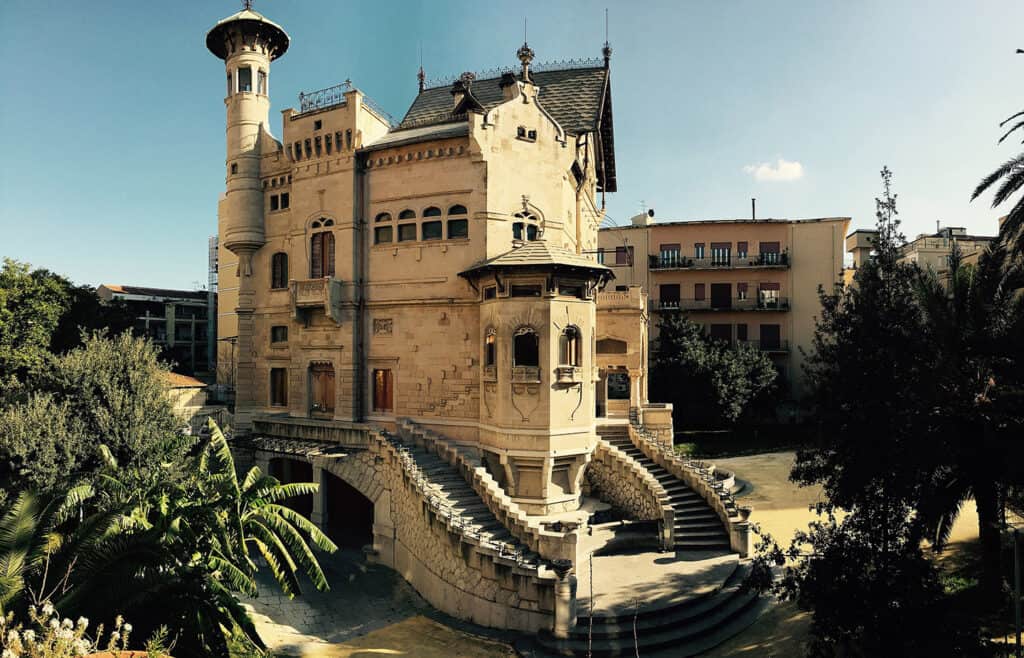
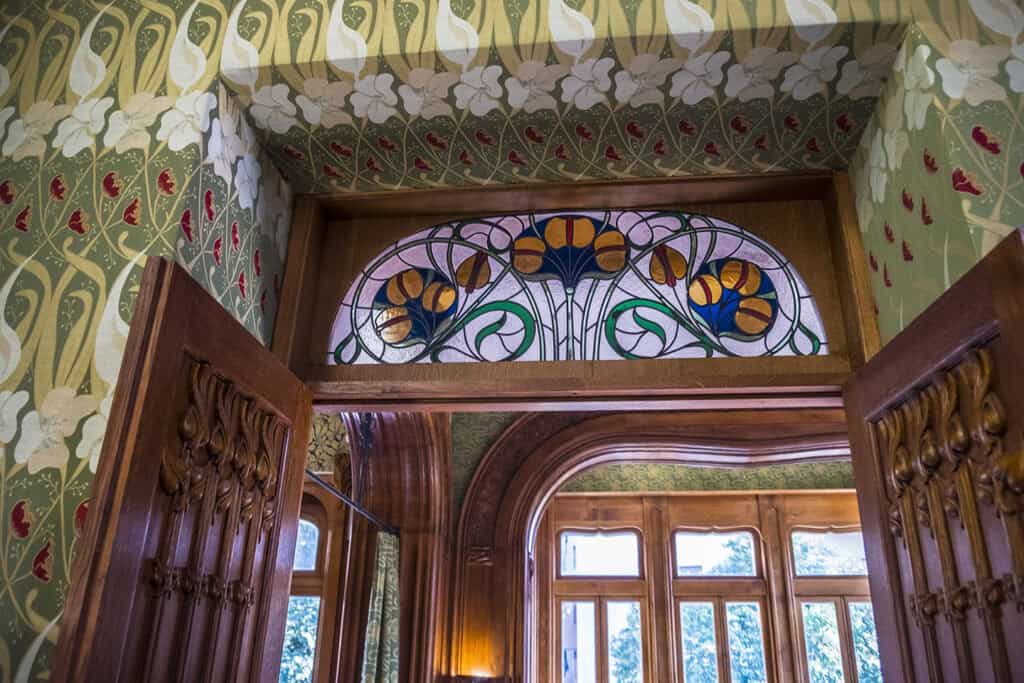
Villino Florio is a notable example of Liberty-style architecture in Palermo. Designed by architect Ernesto Basile between 1899 and 1902, it reflects the Art Nouveau movement. The building features floral motifs and elegant curves, which are hallmarks of Liberty style and art nouveau design.
This house combines modern elements with artistic forms. It includes intricate ironwork and glass art. The façade has unique keyhole designs and balconies that show organic shapes often seen in Art Nouveau designs.
Villino Florio played an important role in popularizing the Liberty style in Sicily. It celebrates the era’s innovative furniture designs and architecture. The building stands out among famous works like Villa Igiea and Palazzo Bruno di Belmonte.
This makes Palermo a key center for the Liberty-style movement.
Its rich decorations and unique structure are important to the architectural landscape. It attracts visitors who appreciate the blend of art and architecture from the fin de siècle period.
4. Casa Fenoglio-Lafleur

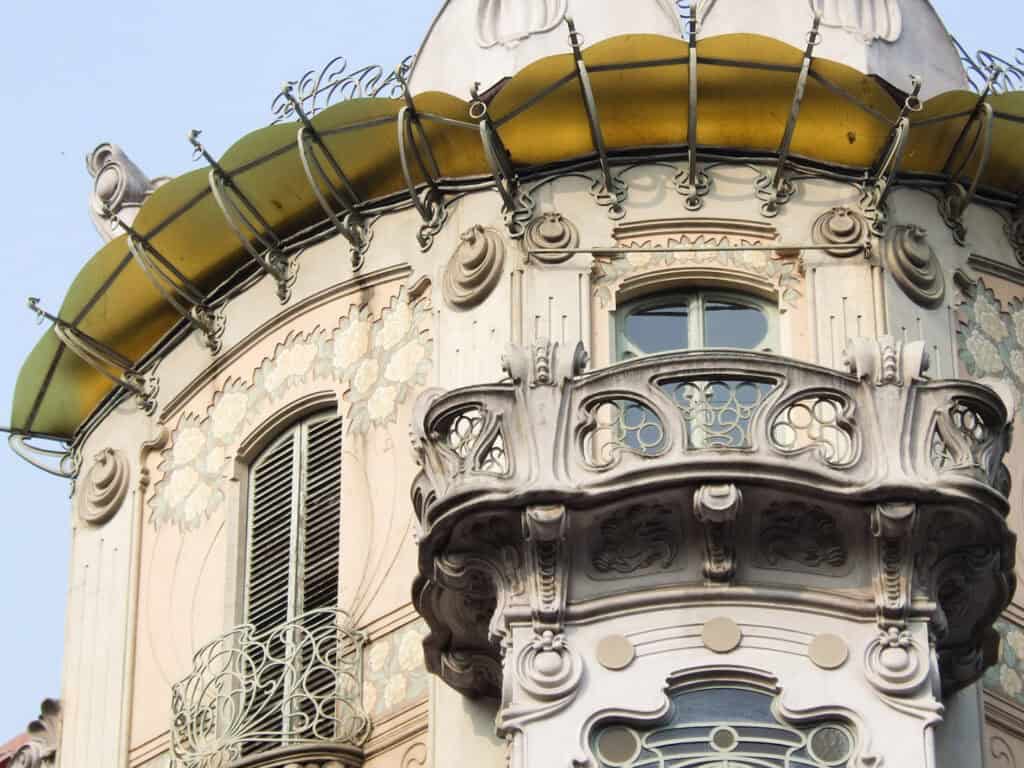
Casa Fenoglio-Lafleur is a prominent example of Liberty-style architecture in Turin, Italy. Designed by Pietro Fenoglio in 1902, it reflects the Liberty movement, also known as Art Nouveau.
The façade has curved lines and unique organic shapes that show the floral style typical of this architecture. Decorative elements like ironwork and glass art highlight the creative use of materials from this period.
Inside, the design mixes modern elements with traditional features. It uses artistic forms inspired by nature. This combination exemplifies the Liberty style, blending beauty with functionality in residential design.
5. Villa Scott
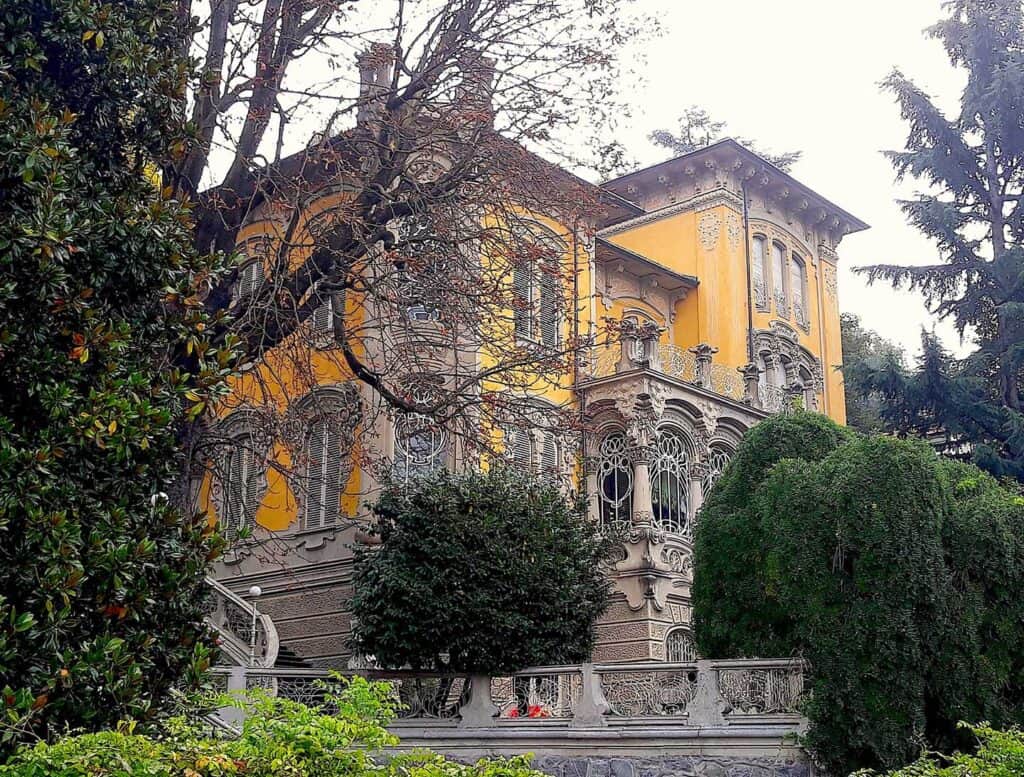
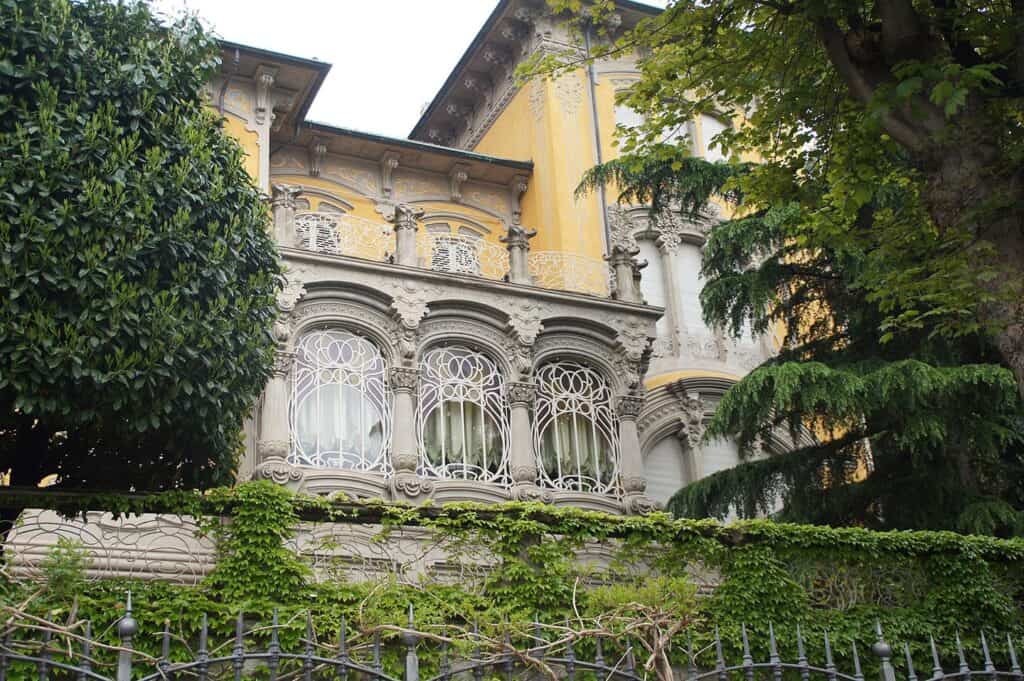
Villa Scott, finished in 1902, is a notable example of Liberty-style architecture in the Borgo Po district of Turin, Italy. Designed by Pietro Fenoglio, it shows key features of the Liberty movement, also known as Art Nouveau.
The villa is known for its curved lines and natural shapes, which fit the floral style and show the link between architecture and nature. The façade includes intricate decorative art.
Villa Scott has innovative design features that were popular during the fin de siècle period. With its artistic forms and elegant balconies, it is a masterpiece of its time. The design mixes modern elements, giving it a unique look.
The interior design highlights the Liberty Style with its decorations and craftsmanship. It includes metalwork and glass art, showcasing the skill of the artisans from that period.
This focus on artistic detail is similar to Art Nouveau interior design. Architects like Fenoglio played an important role in popularizing this style and impacted Italian architecture.
See Also What is Modernist Style in Architecture? 10 Key Features
6. Casa Galimberti
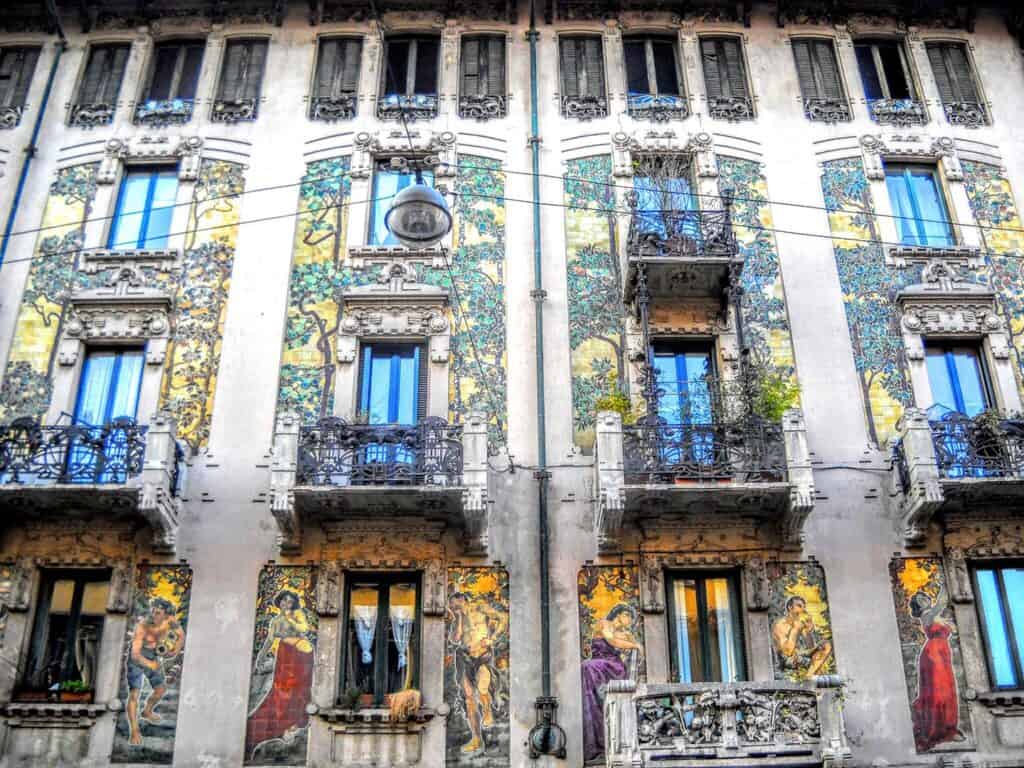
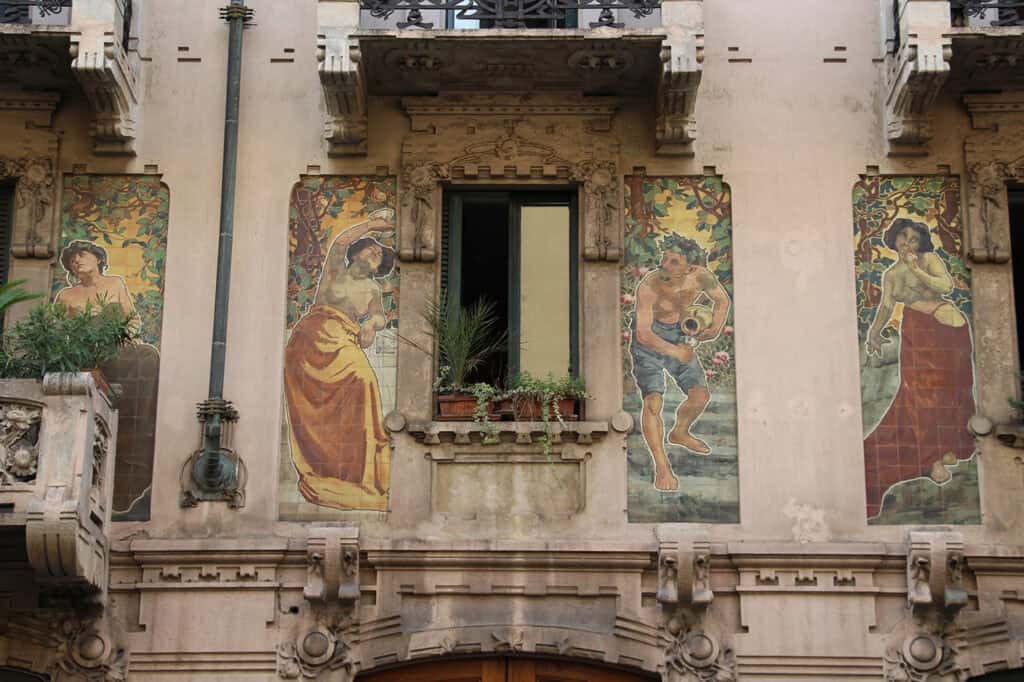
Casa Galimberti, finished in 1904, is a great example of Liberty-style architecture in Milan. This building shows the elegance and detailed design of the Art Nouveau movement, with flowing lines and natural shapes.
The façade has bright mosaics and floral patterns that come from nature. Curved lines and unique coverings make it beautiful and help it stand out in the city.
Designed by architect Giovanni Battista Bossi, this home shows the Liberty style’s focus on decorative arts and skilled metalwork. Unique details, like wrought iron balconies, display the craftsmanship of that time.
Casa Galimberti shows new ideas in architecture from its time and is an important cultural landmark. It mixes modern elements with traditional styles, making it a key part of Milan’s landscape.
7. Casa Guazzoni

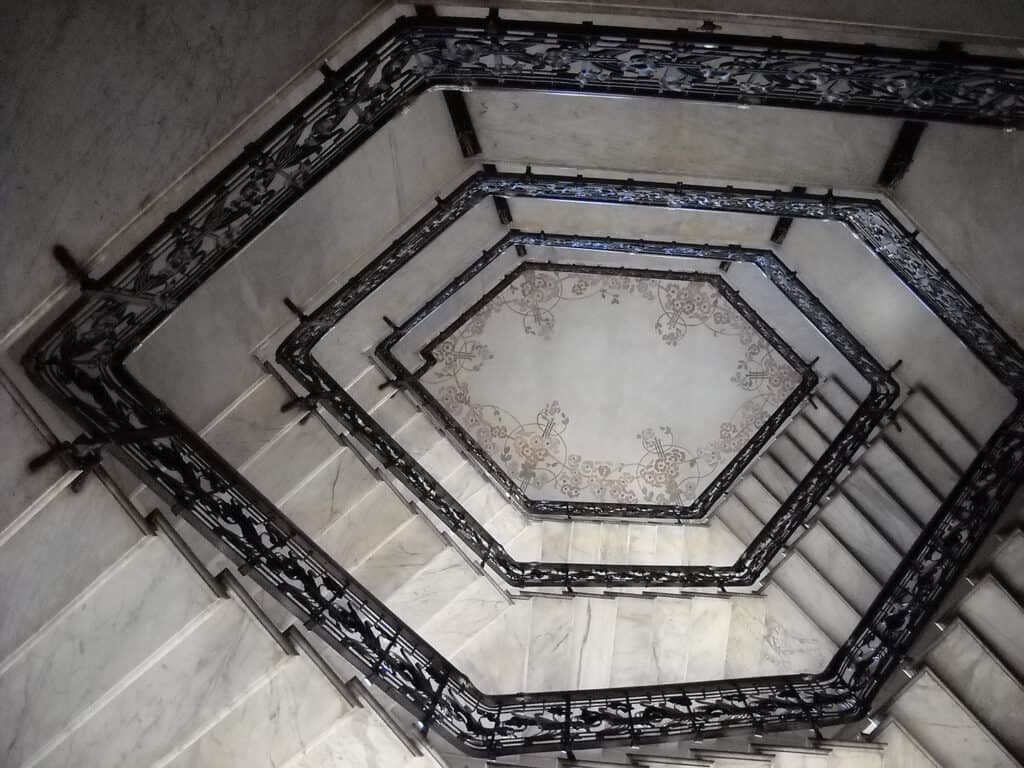
Casa Guazzoni is a brilliant example of Liberty-style architecture in Milan. Giovanni Battista Bossi designed it between 1904 and 1906. The building shows the Art Nouveau style with detailed designs and floral patterns.
The façade has curved lines and natural shapes, which are typical of the Stile Liberty movement. It combines modern elements with forms inspired by nature, making it different from older styles. Decorative arts like ironwork and mosaics add beauty to the building.
Casa Guazzoni is an important building in Milan and reflects the Liberty Style’s aim to create art that is both accessible and beautiful. With its ornate balconies and detailed windows, it attracts visitors interested in artistic designs and Italy’s architectural history.
8. Palazzo della Vittoria
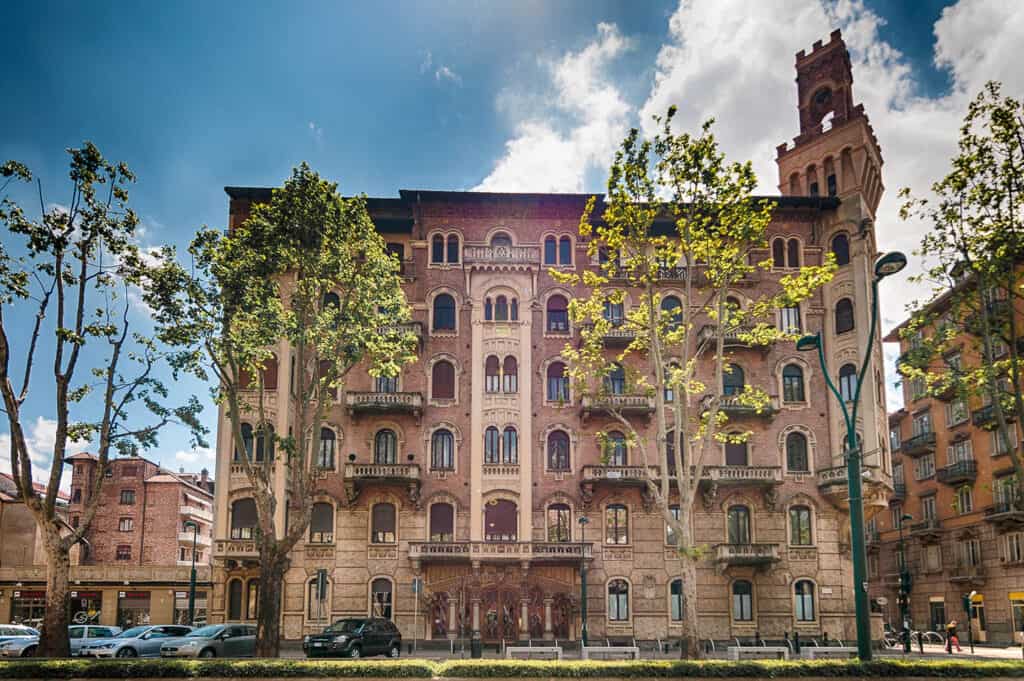

Palazzo della Vittoria is a great example of Liberty Style architecture in Turin, Italy. Gottardo Gussoni designed it between 1918 and 1920.
The façade has decorations like dragons and detailed ironwork. It combines natural shapes with modern design, showing the creativity of the time. As a residential building, it shows how Liberty Style fits well with city life.
Inside, there is unique furniture and artistic forms that focus on both beauty and usefulness. The Palazzo reflects the early 20th-century style and is important to Turin’s architectural heritage.
This building blends outside decoration with modern living, showing its role in the Liberty Style movement. Its unique look still attracts attention and marks an important point in Italy’s architectural history.
See Also Bohemian Style Architecture: Key Features & Design Tips
Liberty Style Architecture: A Recap
Liberty-style architecture in Italy is a beautiful mix of art and nature. It shows a unique cultural heritage. Buildings like Palazzo Castiglioni and Casa Guazzoni have floral motifs and detailed designs. They show the creativity and innovation of the early 20th century.
Each example, like Villa Igiea and Palazzo della Vittoria, highlights the movement’s focus on beauty and function. As you explore these amazing landmarks, you will see how Liberty Style changed the architectural landscape of Italy. It blends artistic expression with everyday life.









